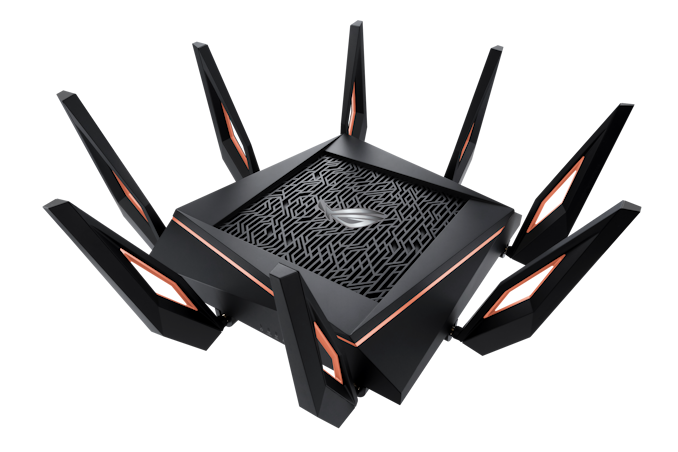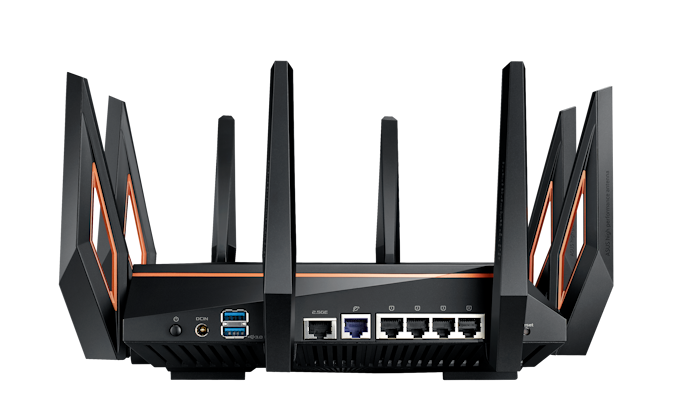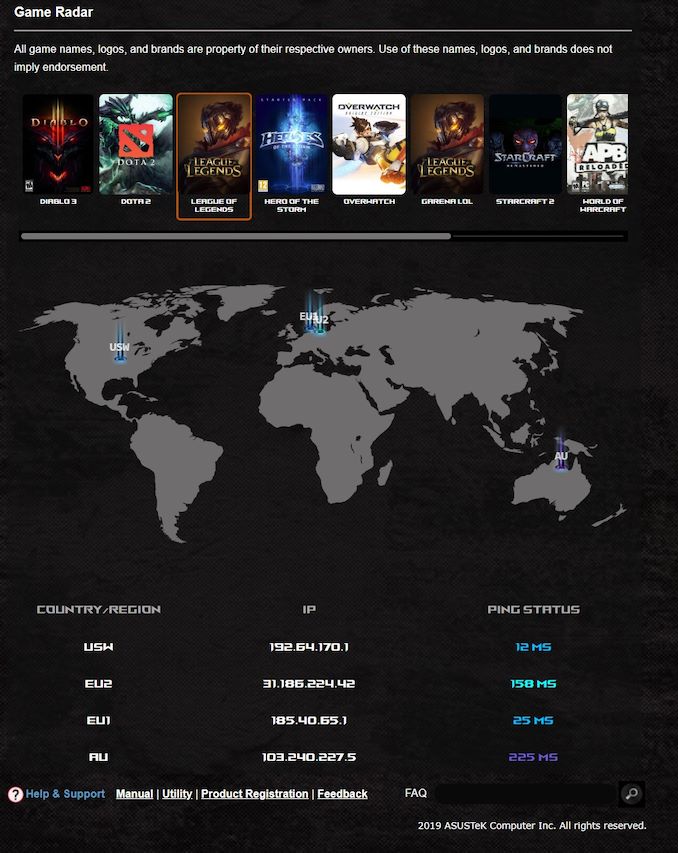AT 101: Wi-Fi 6 And Why You Want It
by Brett Howse on February 12, 2020 8:00 AM ESTThe 2020 AnandTech Wi-Fi Test Bed
We’ve been comfortably using Wi-Fi 5 for some time now, and it is only in the last several months that laptops have been shipping with Wi-Fi 6 based networking, mostly thanks to Intel’s Project Athena which has a requirement of the Intel AX200 Wi-Fi module, which is Intel's first Wi-Fi 6 based module on the market. Previously almost all shipping laptop computers offered Wi-Fi 5, and even a few with the latest Intel wireless adapters such as the Wireless-AC 9260 offered the advanced Wi-Fi 5 options such as 160 Mhz channel width, and MU-MIMO, so its nice to see a move to a new standard which includes these benefits across the board.
Although there are now quite a few Wi-Fi 6 routers and access points on the market, we had some specific criteria to meet. The router had to support Wi-Fi 6, and the 160 MHz channels, but because we are testing for performance, and not for capacity, we need an access point with a multi-Gigabit Ethernet connection. A typical laptop with a 2x2:2 network connection will be connecting to the access point at 2.4 Gbps, so transferring files from Ethernet over Gigabit will be a bottleneck. This does limit the selection somewhat.
After evaluating several models, we decided on the ASUS ROG Rapture GT-AX11000. The name is a mouthful, but meets all of our criteria and more. Most importantly, it offers the coveted 2.5 GbE port.
The ASUS ROG Rapture GT-AX11000
As the name implies, this router from ASUS can support up to 11000 Mbps over wireless, thanks to the 4x4 2.4 GHz, offering 1148 Mbps, and the two 4x4 5 GHz networks each offering 4804 Mbps. This adds up to just under 11000 Mbps, although with wireless the maximum connection speed is pretty much impossible to achieve. With the two separate 5 GHz networks, you can easily split off your consumption devices with higher priority devices, reducing interference on each network.
On the Wide Area Network (WAN) side there is a single 1 Gbps connection, and on the Local Area Network (LAN) side there are four 1 GbE and the single 2.5 GbE connection.
This router is built for capacity, with eight external antennae, and being a gaming router it also offers plenty of RGB lighting options. For those that don’t need the lighting, it can be turned off. ASUS also some tools to change the priority of gaming packets to reduce latency, assuming your network is that busy, and specifically prioritizes traffic from other ROG devices to make setup as easy as possible. ASUS even includes a utility to ping the various game servers for popular multiplayer games to provide you a map of latency to each one.
The GT-AX11000 also integrates with the ASUS AiMesh networking equipment to provide a whole-home mesh network, if even a router of this size can’t cover the entire house, either due to size or building materials blocking the signal.
For testing, the router is used in the access point mode, with the LAN connecting being over the 1 Gbps Ethernet, and a server connected directly to the router in the 2.5 Gbps port.













149 Comments
View All Comments
Axiomatic - Wednesday, February 12, 2020 - link
That all sounds great but I will wait for someone serious like Ubiquiti to release a device. Combo Router/WAN devices are silly. I don't need a new router. I only need new WAN devices with WI-FI6.yeeeeman - Wednesday, February 12, 2020 - link
This is only the beginning. Next wifi client solutions will get concurrent dual band and ultra high bands like 6Ghz.flyingpants265 - Wednesday, February 12, 2020 - link
I don't.PeachNCream - Wednesday, February 12, 2020 - link
I would want WiFi 6 if I could use it for anything. At the moment, the only broadband provider in my area is Century Link DSL at 10mbit. Internally device-to-device data transfer happens rarely. I had an old phone with a microSD card running as a file server for quick transfers, but I mainly use a 1TB 2.5 inch HDD in a USB 3.0 casing since its faster even on my one laptop that only has USB 2.0 ports. None of my computers supports anything newer than 802.11n either. No smart home devices here. I've worked as a tech professional for more than two decades so things are as analog and offline as possible at my place.regsEx - Wednesday, February 12, 2020 - link
What about ODFMA? Does it work? How well?Vitor - Thursday, February 13, 2020 - link
Lol @ people in this commenct section complaining about having only 200mb/s Internet. Poor you with a connection that can only deal with 10 4k streams of netflix.Dodozoid - Thursday, February 13, 2020 - link
I didn't get it. Does it make sense to get wifi 6 AP for wifi 5 clients in wifi 4 and 5 infested residential building?syleishere - Thursday, February 13, 2020 - link
You guys have to understand that wired connections are on their way out because with wireless, you can split more spectrums in the air for more thoroughput. Air fiber will be faster than your wired 1gb connection. 3 SSD's in a raid 0 would more than handle 3gbps. So it's your wireless card you want to upgrade. There are still purposes for wired, like linking to a database server with link agragation, but for majority of people, a good wireless card will get you speeds way above 1gbps so you can download those torrents faster lolPeachNCream - Thursday, February 13, 2020 - link
Are you aware there are faster than 1gbit connection speeds available over twisted pair copper?Dug - Thursday, February 13, 2020 - link
No offense, but you need to learn about networking before assuming what you do.